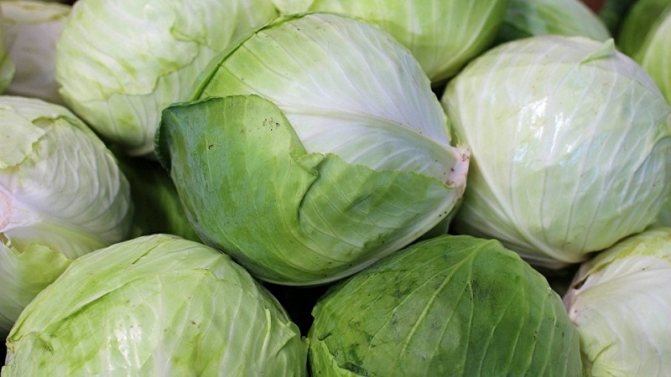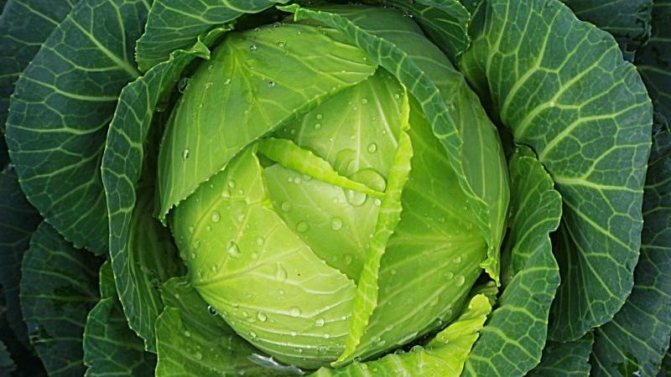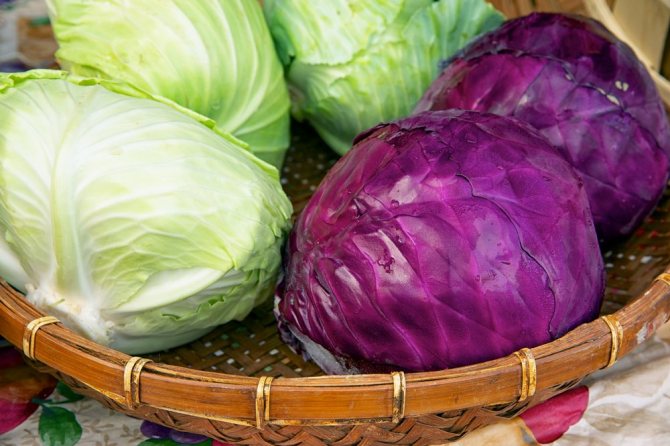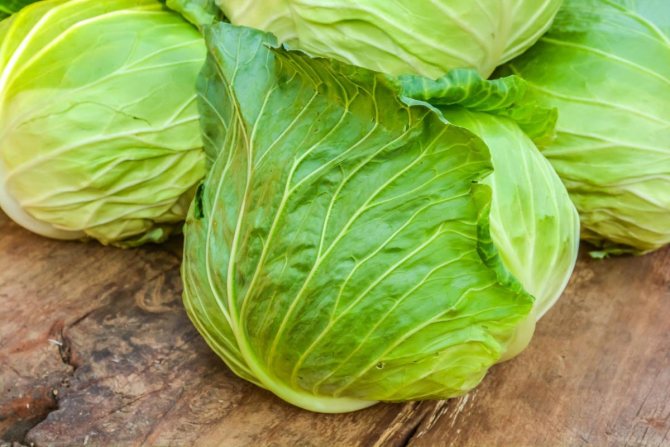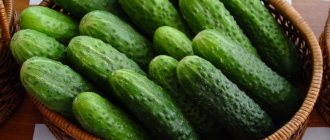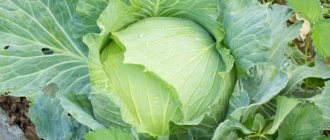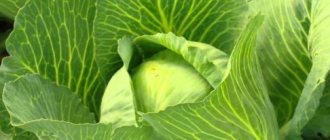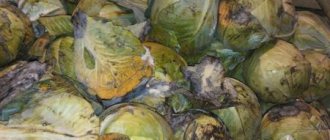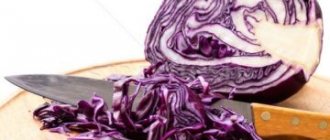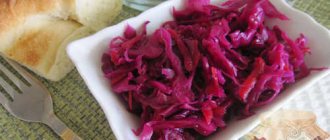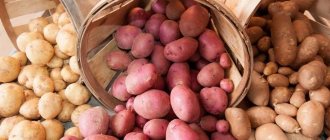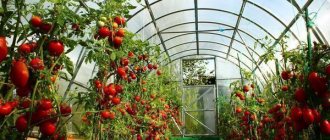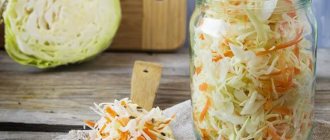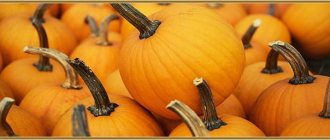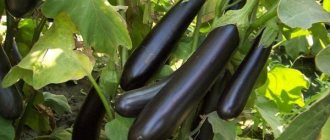Delicious sauerkraut is a godsend for any housewife. The sour vegetable is already a wonderful fresh salad in itself, but if desired, it can be used for cooking various dishes, for example, cabbage soup, vinaigrette, hodgepodge and even cutlets. The taste of all these culinary masterpieces will depend on the correct pickling and, in particular, on the type of cabbage chosen. After all, it often happens that after making a lot of effort and being guided by your favorite, traditional recipe, as a result of the leaven, you get slimy cabbage of an unsightly appearance and obscene taste. And not every housewife in this situation will guess that the whole point is in the wrong choice of vegetable variety. So, let's figure out what are the best varieties of cabbage for pickling and storage, and how to choose the right cabbage heads.
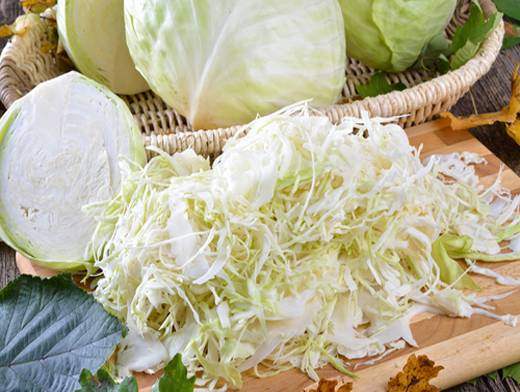
Which variety of cabbage is better for pickling
If the hostess has her own garden, then surely there will be a place for cabbage on it. Experienced farmers in this case are advised to grow several varieties at once: early varieties quickly form small heads of cabbage and are excellent for preparing the first fresh summer salads. Mid-ripening and late-ripening cabbage ripens for a long time, but at the same time its heads ripen large, dense and very juicy. It is this kind of cabbage that should be used for pickling.
When you come to the market, you should also not buy the cheapest or "cutest" cabbage. Be sure to ask the seller what kind of cabbage he offers. It is, of course, not at all easy to navigate the variety of varieties. That is why we will try to bring the TOP-5 of the best mid-early and late varieties of cabbage for pickling. Having heard one of the names given below, you can safely buy a vegetable and harvest it for the winter.
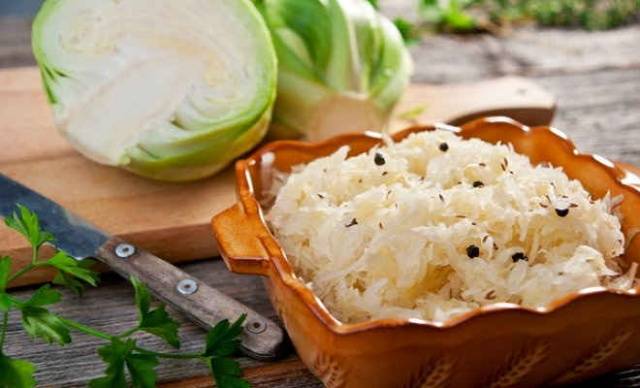

The best mid-season varieties
The varieties proposed below are excellent for long-term storage and salting, fermentation. This list has been compiled on the basis of feedback and comments from experienced chefs and caring housewives. Finding such a cabbage will probably be quite simple, because a conscientious farmer always offers the best product on the market and strives to satisfy the needs of the buyer.
Cabbage with an average ripening period can be grown even in the northern regions of the country. Its growing season averages 120-140 days. This time is enough for a small seed to turn into a full-fledged, ripe head of cabbage.
Glory 1305
This delicious cabbage always occupies a leading position in all castings, demonstrating excellent taste and appearance, and high yield. It is quite easy to find the seeds of this cabbage, and in the fall season it can also be found without any problems at any agricultural fair.
The heads of this cabbage are medium in size. Their weight, depending on growing conditions, varies from 2.5 to 5 kg. The shape of the vegetable is flat-round, which is typical for varieties of late ripening. The top leaves of the head of cabbage are pale green, but in cross-section, you can see tightly connected leaves of a milky white color. Growing this variety on your land plot, you can get a yield of 10 kg / m 2.
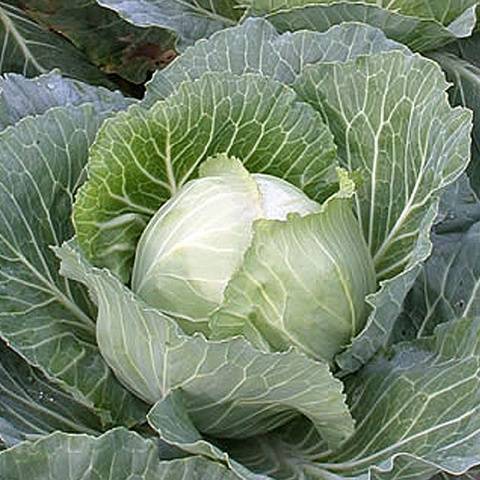

The taste of the variety is very high: the vegetables are sweet, juicy and crunchy. They are able to maintain their freshness for a long period of time.
Many agricultural exchanges list this variety in the TOP-5 of the most demanded in the market. This is due to the fact that "Gift" is perfectly adapted to domestic conditions, unpretentious and even in the most unfavorable weather is able to give a harvest in the amount of 10 kg / m 2.
Heads of cabbage, with an average weight of 4-4.5 kg, are very juicy, but they never crack. Dense vegetables have a rounded shape and milky-white leaves. The product demonstrates excellent keeping quality and is recommended for fermentation. "Gift" can be stored until March without losing freshness and consumer qualities.
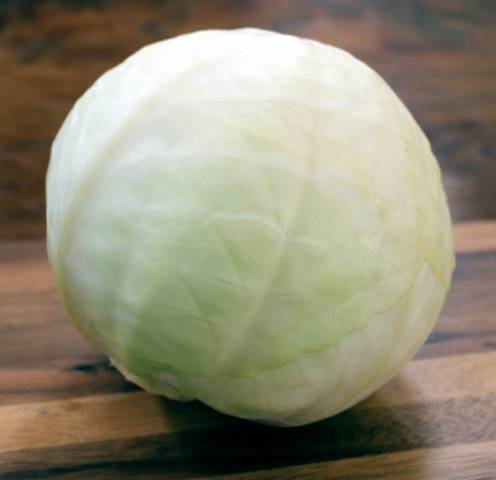

Belarusian
“Belorusskaya” is the best variety of cabbage for pickling and long-term storage, according to many experienced experts. So, under certain conditions, heads of cabbage can retain their quality until April. The vegetable is also great for pickling, making fresh and canned salads.
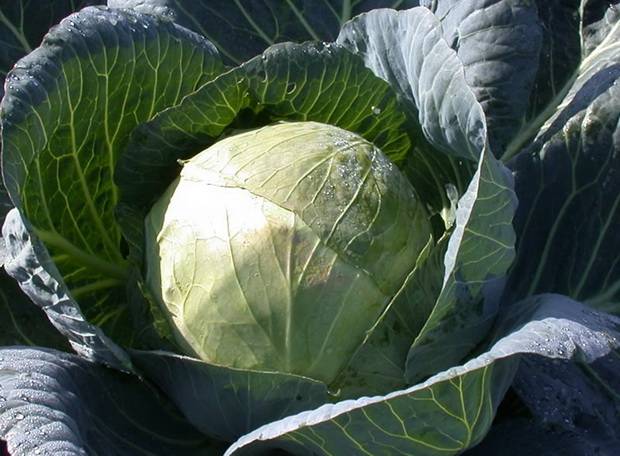

A mid-season variety ripens 135 days from the day of sowing the seed for seedlings. During this time, dense, round heads of cabbage are formed. Their upper leaves are dark green in color. Each vegetable weighs approximately 3.5 kg. Sowing seeds of this variety in April for seedlings, already in September-October it will be possible to harvest juicy and sweet cabbage in the amount of 8-9 kg / m 2.
This excellent hybrid has long been famous for its high yield, excellent fruit quality and the possibility of long-term storage. Menza f1 always disfigures juicy, sweet, crunchy and especially large heads of cabbage. This vegetable is used for long-term winter storage and fermentation.
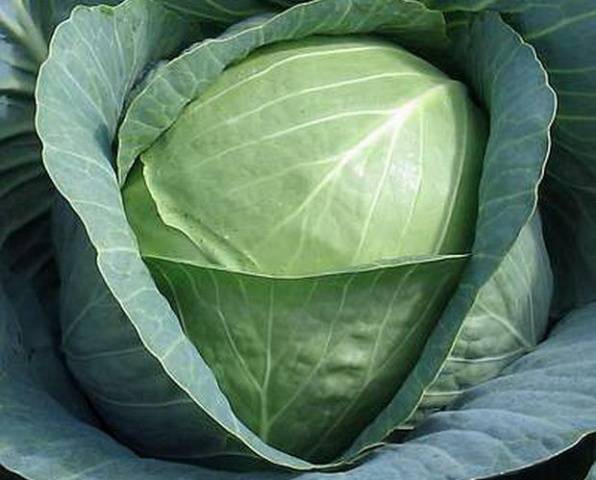

The head of cabbage "Menza f1" is especially dense. Its upper leaves are colored light green. In cross section, the vegetable is white. The variety belongs to the category of medium early: from sowing the seed to the ripening of the head of cabbage, the period is 110-115 days.
Amager 611
The Amager 611 white cabbage variety is unique, since the taste of the vegetable gradually improves during storage. So, it is generally accepted that for 6 months from the day of harvest, cabbage retains its usefulness, freshness and excellent taste.
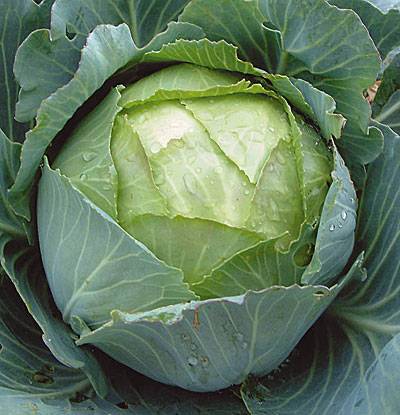

Heads of cabbage "Amager 611" are not very large, weighing up to 4 kg, dense, flat-round shape. A feature of the variety is the silvery-green, glossy top sheets of the vegetable.
In addition to the listed mid-early varieties, cabbage for pickling "Dobrovodskaya", "Jubilee f1", "Aggressor f1" is good. The same varieties can be put into bins for long-term storage and fermentation.
The best late-ripening varieties
Late-ripening cabbage varieties are grown in the central and southern regions of the country. Their growing season is about 150-180 days. As a result of such a long cultivation, the owner can get large and very juicy heads of cabbage, suitable for winter storage, salting, and fermentation. You can familiarize yourself with the list of the best varieties of late-ripening cabbage further in the section:
Moscow late
The variety has good marketability and taste. It is grown by many gardeners and farmers in the central and southern regions of the country. In 150 days, cabbage grows from a small seed into a large head of cabbage, weighing up to 8 kg. Sweet and crunchy vegetables do not crack, they are covered with gray-green juicy leaves. The high crop yield (up to 12 kg / m 2) allows you to prepare fresh, salted, pickled and canned vegetables for the winter. The taste of cabbage preparations of this variety is always wonderful.
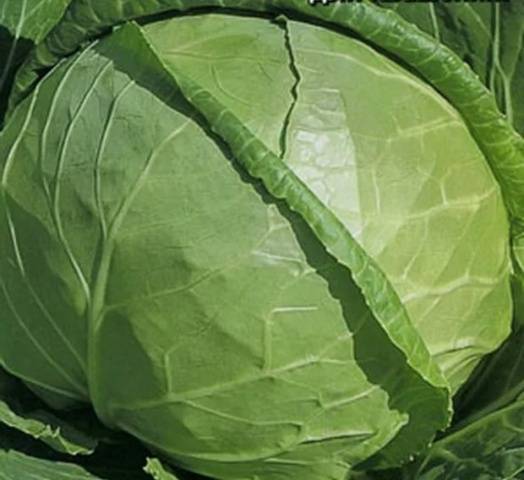

Kharkov winter
Late-ripening cabbage "Kharkovskaya Zimnyaya" ripens in 170 days. At the end of the growing season, the farmer receives small heads of cabbage, weighing up to 3.5 kg. The middle of these vegetables is white, and the top leaves are bright green.The crop yield does not exceed 8 kg / m 2, but this is quite enough to stock up on fresh vegetables for the winter and prepare healthy and tasty sauerkraut for the whole family.
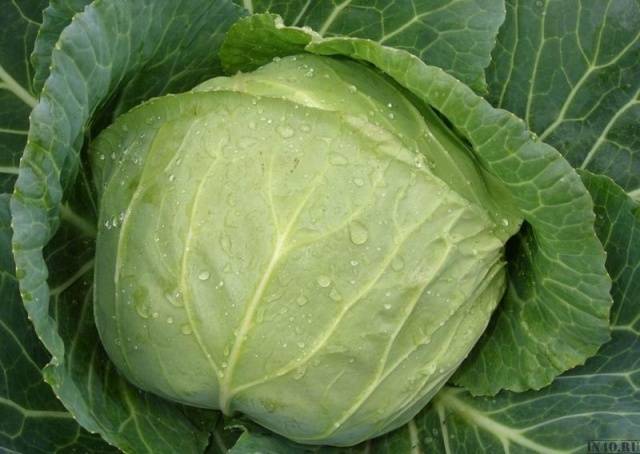

Valentine f1
The late-ripening hybrid is excellent for growing in the south of Russia. The growing season of the culture is 180 days. During this time, heads of cabbage, weighing 3-4 kg, ripen. Small but very juicy, sweet and crunchy vegetables are great for pickling and pickling. You can store cabbage without processing for 6 months.
How to choose good heads of cabbage
When choosing cabbage for pickling, you need to pay attention to the variety and characteristics of the head of cabbage itself:
- Only white cabbage of medium early or late ripening is suitable for pickling. This is due to the high sugar content of these vegetables.
- Heads of cabbage should be dense and large.
- The top leaves of the vegetable should be as light as possible. Do not ferment green leaves.
- The sweeter the vegetable, the higher the likelihood of a successful starter culture.
- A good head of cabbage "springs" when compressed, which indicates its high quality.
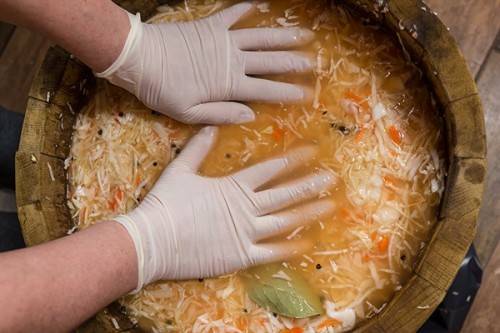

Watching the video clip, you can also get some tips on which varieties of cabbage to choose for souring and storage and how to correctly identify a high-quality vegetable:
With these guidelines in mind, you can always count on sourdough success. Crispy and juicy, moderately sour cabbage will definitely have to the table and will feed all family members. The benefits and amazing taste of properly cooked sauerkraut are always difficult to overestimate.
With cranberries
Sauerkraut looks more like a vitamin salad. Here are the proportions for a small amount of the product You can safely multiply everything by ten!
Per kilogram of late varieties of white cabbage, one large carrot, two apples, cranberries to taste - on average a glass, a tablespoon with a large slide of salt. You can add spices! Allspice and black pepper, red pepper, very good - bay leaves, great - cloves to apples, excellent aroma of cumin, anise, coriander. Mustard seeds will rid the product of bad bacteria, good mustard does not offend! Everything to your taste.
Remove the top damaged leaves from the cabbage, put several whole leaves separately - you will need them. Quarter the head of cabbage, cut out the stalk and chop thinly, in long strips. Grate peeled carrots in Korean. Grate apples on a coarse grater, you can with the skin.
Mix cabbage, apples and carrots with salt. Take a large enamel pan, scald it with boiling water, cover the bottom with half of the harvested top cabbage leaves. Put part of the cabbage mass on the leaves, transfer with cranberries, then add the next part. Put the cranberries back in. Etc.
Cover the cabbage prepared for pickling with the remaining top cabbage leaves, cover with a plate of a smaller diameter than the pan, on it - oppression. Leave in this position for a day right at room temperature.
After a day, remove the foam that appears on the surface with a spoon or slotted spoon. Pierce the cabbage to the bottom in several places with a wooden splinter. Return oppression. And let him wander on.
After four to five days, the cabbage should be placed in a cold place. Arranging in jars or leaving in a saucepan is not so important, but she needs a cellar, basement or balcony. Or a refrigerator.
What are the best cabbage varieties for pickling, pickling and storing for the winter
Fresh, sauerkraut or salted cabbage must certainly be on the list of preparations for the winter with every housewife. It is good both as an independent appetizer or side dish, and as an ingredient in cooking cabbage soup, pies, cutlets and much more. But it often happens that sauerkraut is being prepared according to a recipe that has been proven for more than one year, and the result is far from ideal. It comes out not crunchy, with not the most appetizing aroma, or even slimy. And wrongly chosen vegetables are to blame.Only by choosing the right variety of cabbage for pickling and pickling, as well as storage, one can hope to get the expected result.
How to choose the right variety for winter harvesting
In order for white cabbage to be preserved in winter for as long as possible, it does not matter whether sauerkraut or a whole head of cabbage, there are a number of rules that allow you to choose a suitable variety of cabbage for pickling and pickling:
- Cabbage should be of medium late varieties.
- The head of cabbage should be ripe, firm, large, heavy and resilient.
- In the context, it should be white, possibly creamy, but not yellow or green.
- The leaves should have a sweet taste, this indicates a high content of glucose, without which the fermentation process during fermentation is not possible.
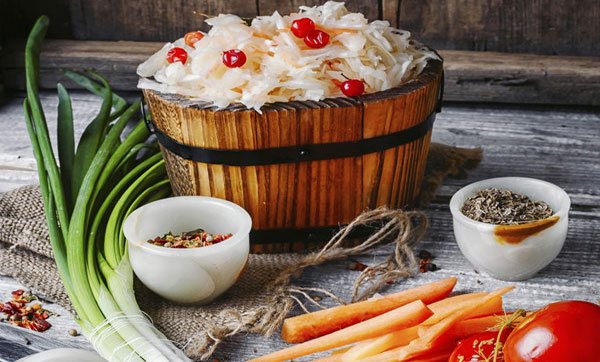

For storing whole forks, choose cabbage of late-ripening varieties. The leaves of such vegetables have more plant fibers, they are coarser, but the fermentation processes in them are much slower. This keeps them fresh until the next harvest begins. Heads of cabbage should be taken very tight in order to exclude moisture and insects from getting inside.
Cooking recipe according to Soviet GOST
This product undergoes lactic acid fermentation. Raw materials that exclusively meet the requirements of GOST and VTU.
- White cabbage of medium and late varieties. Heads of cabbage are fresh, mature, without cracks, dense, not loose, whole, healthy, clean. Each head of cabbage weighs at least seven hundred grams. It is forbidden to pickle frozen cabbage. Recommended varieties: Slava, Belorusskaya, Gribovskaya, Kashirskaya, Saburovka and others.
- Fresh table carrots: root vegetables are healthy, fresh, uniform in color, whole, not damaged by pests, at least three centimeters in size at the largest diameter. Varieties with bright orange flesh and heart are recommended.
- Fresh apples: not lower than the first grade, ripe, clean, not damaged by pests. Recommended varieties: Antonovka, Anis, Sklyanka, Babushkino and others.
- Fresh cranberries: whole, brightly colored berries without twigs, leaves, debris.
- Fresh lingonberries: ripe, whole, clean berries, no debris.
- Caraway seeds: seeds without foreign impurities and without a musty smell.
- Bay leaf: leaves without twigs, without foreign smell.
- Table salt, grinding No. 1, not lower than the first grade.
The best mid-season and mid-late varieties and hybrids
Medium and medium late cabbage has a growing season of 80 to 120 days. They can be grown in different regions, but if in the south such cabbage can be sown directly into unprotected soil, then in areas with long winters, only the seedling method is suitable for it.
Mid-season varieties can be called compromise, since they are quite versatile, but they have some drawbacks. Such vegetables are suitable for fresh salads, but their leaves are coarser than early cabbage. They can be removed for the winter, but by the new year they will start to deteriorate. Suitable for pickling and from such heads of cabbage delicious sauerkraut is obtained, but it is usually stored for no more than three months.
Medium late plants are much better preserved in winter, both salted and fresh. But their leaves are quite hard and not quite suitable for salads. But they are excellent for stewing, soups and frying, since they hardly boil during heat treatment.
According to many housewives engaged in harvesting, the best varieties of cabbage for pickling pickling and storage are Podarok, Slava 1305 and Belorusskaya, and hybrids are Megaton and Aggressor.
Belarusian 455
This is a mid-late variety. This cabbage is distinguished by its large round forks, the average weight of which is 3 kg. They have a sweetish taste, juicy, very dense. The ripening period is 110-120 days. The average yield is 8 kg / m 2.
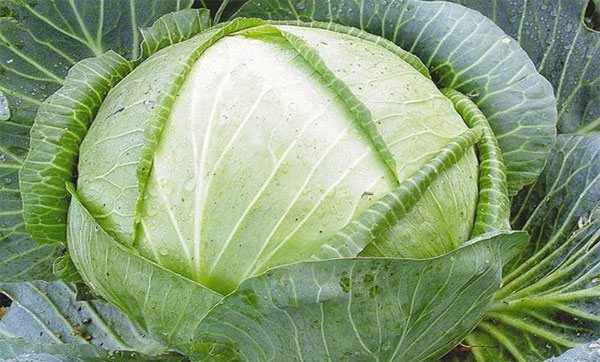

Judging by the reviews of vegetable growers, this variety of cabbage is perfect for harvesting for the winter in any way. Has a long shelf life. It is often used for pickling.
A distinctive feature of this cabbage is a pronounced bloom of wax on all leaf plates of the plant. It is characterized by the elasticity and density of a head of cabbage, the mass of which reaches 4.5 kg. It tolerates transportation well. It is preferable to keep it fresh, but sauerkraut will taste good for 5 months.
The forks are round and do not crack. A very unpretentious mid-late variety, even with poor care, a yield of 10 kg / m 2 is provided.
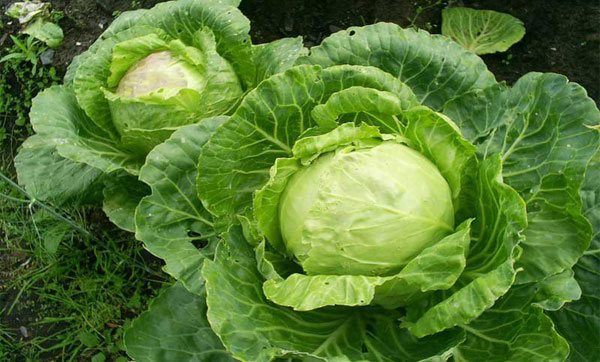

Glory 1305
High-yielding mid-season variety, from germination to technical ripeness takes 95-110 days. Suitable for cultivation in all regions of our country. It is perfectly stored and withstands transportation, does not crack. This cabbage can be fermented, it will turn out juicy and crispy. Fresh well stored until January.
The shape of the heads of cabbage is flat-rounded, the outer leaves are light green, strongly wavy along the edge, the inner ones are white. The yield of the variety is 10 kg / m 2. The average weight is 2.5-3 kg, and with good agricultural technology - 5 kg. To make vegetables sweeter and juicier, the crop is harvested after several frosts. The main disadvantages are its susceptibility to carinae, fusarium and vascular bacteriosis.
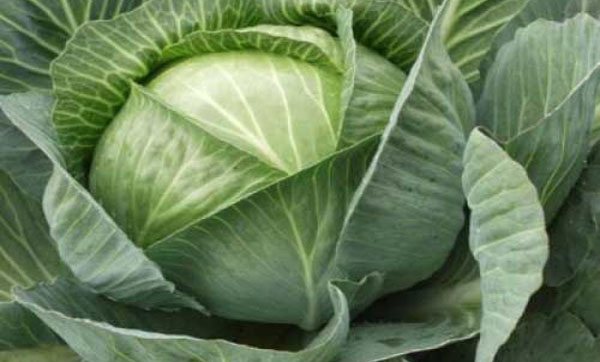

Aggressor F1
Mid-late hybrid, its name is associated with the ability to actively build up green mass even in unfavorable conditions. Demanding on soil fertility and moisture. The hybrid is resistant to fusarium, not damaged by the cruciferous flea.
The fork has a flat shape, elastic, does not crack, reaches a mass of 4.5 kg. Up to 1 ton of harvest is harvested from one hundred square meters. When grown in any climate, it always yields a good harvest. Keeps fresh for 4 months. Tasty both fresh and pickled and salted.
The best late-ripening varieties and hybrids
Late cabbage has a very long growing season of 6 months. Six months pass from sowing to harvest, so these vegetables are grown exclusively in seedlings. This cabbage is the longest winter storage with forks, but it is also excellent for pickling and pickling. Its only drawback is the coarseness of the leaves, which makes it not very suitable for salads.
Snow White
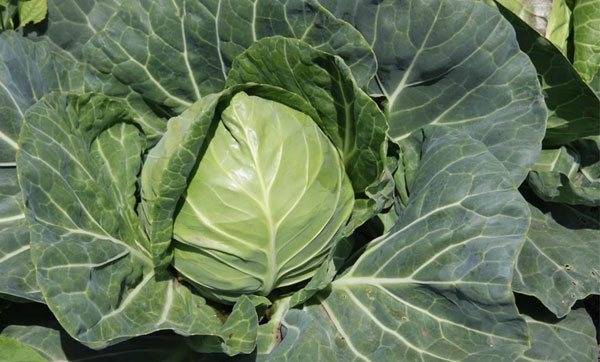

This late variety has a growth period of 150-175 days. Heads of cabbage reach 4 kg with good agricultural technology, have a flat-round shape, very tight. The outer leaves are gray-green, the inner ones are white. Excellent taste, juicy, sweet, without bitterness. Often used to feed babies.
Snow White is loved by farmers for its unpretentiousness, resistance to various kinds of diseases and pests, good transportability and the ability to stay fresh for up to 7 months. This is one of the best pickling varieties.
Moscow late
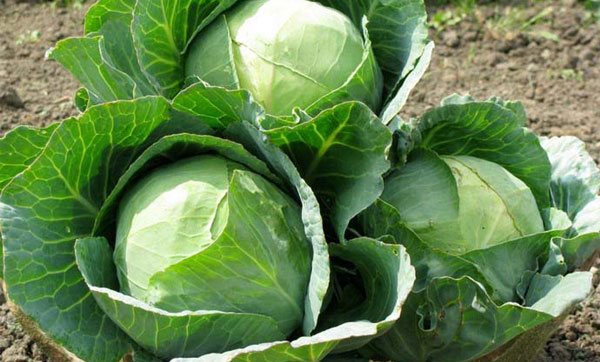

The variety is distinguished by high yields and large head sizes, the average weight of which is 7-10 kg, and with good care, even 15 kg. Thanks to this, it is loved not only by gardeners, but also by farmers. It lends itself well to transportation over long distances and does not crack, while maintaining an excellent presentation.
150 days pass from germination to technical ripeness. A head of cabbage of high density and elasticity, has a rounded shape, flattened at the bottom. The outer leaf plates are green with a grayish tinge. This late variety of sauerkraut is like no other. It stays fresh throughout the winter and does not deteriorate.
Kharkov winter
A very late-ripening variety, 165 days pass from sowing to technical maturity. Its yield rarely exceeds 8 kg / m 2, the weight of the forks reaches 3.5 kg. This plant tolerates heat very well, insufficient watering and even frost. At the same time, it has excellent commercial qualities: it withstands transportation well, remains presentable when stored for up to 6 months, and has a good taste.Suitable for various types of canning, in particular salting and pickling.
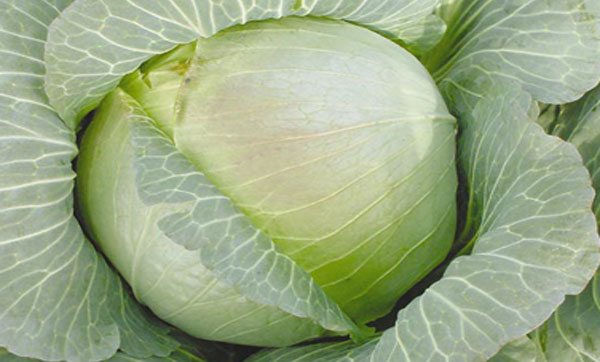

Amager 611
A fairly popular variety that reaches technical maturity in 160 days, but is allowed to grow in all regions except the Far North. The forks grow dense, weighing up to 4 kg. The outer leaves are green with a grayish tinge and a dense bloom of wax, the inner ones are white, slightly greenish. Delicious both fresh and sour.
It is characterized by a yield of up to 7 kg / m 2, resistance to decay and cracking, ripeness, well withstands transportation over long distances. The plant tolerates spring cold snap well, but does not tolerate insufficient watering.
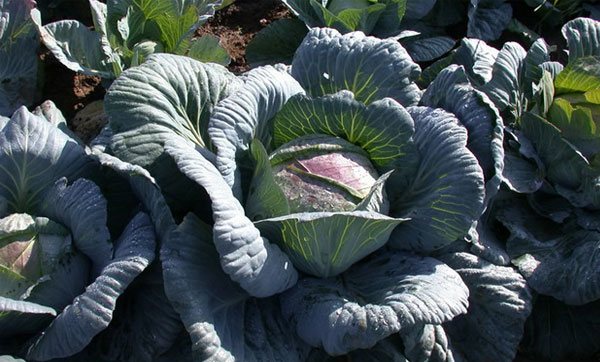

Its peculiarity is the improvement of taste during long-term storage; over time, a pronounced bitterness disappears. The disadvantage is poor resistance to black rot and bacteriosis, and is also susceptible to gray rot and pinpoint necrosis.
Valentine F1
From germination to harvest, 160-180 days pass. Heads of cabbage grow medium in size, weighing up to 3 kg. Excellent taste, juicy, sweet, crunchy. They can stay fresh for up to six months, this cabbage is well suited for pickling, pickling, winter salads.
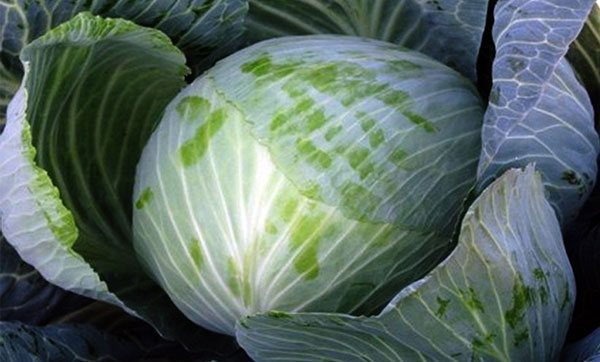

The forks have a small stump, the outer leaves are bright green with a touch of wax, the inner ones are white. This late variety of sauerkraut is great as well as for storage whole. The disadvantage is poor seed germination.
Polar
Cabbage Polar Czech selection is notable for its high yield, resistance to cracking and sharp drops in temperature.
This cabbage is stored for a long time, it is very tasty when fermented.
| Productivity (kg per 1 sq.m) | Head of cabbage weight (kg) | Maturation (days) | Storage |
| 12-15 | 3-4 | 140-150 | Long-term |
- Homemade cabbage cosmetics - the best beauty recipes
Cosmetics based on cabbage solve many skin and hair problems. Try these simple and effective recipes for yourself.
How fermentation differs from salting
In these, by and large, very similar methods of canning cabbage, there are certain differences. Here we are talking about the preparation of products using acid, but not tartaric or acetic acid. Souring occurs by natural fermentation, resulting in the formation of a preservative - lactic acid, which is obtained from the fermentation of the sugars present in cabbage.
In salting, extraneous bacteria suppress salt, with which it is important not to overdo it. If there is a lot of salt during salting, then it begins to inhibit the fermentation process. If salt is used in moderation, it suppresses the vital activity of unnecessary microflora and makes it possible for lactic acid bacteria to develop.
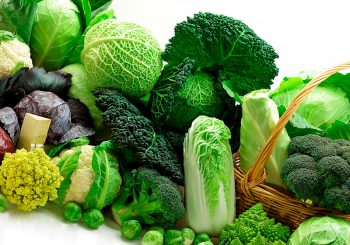

It turns out that both salting and pickling of cabbage are very similar processes: preservation occurs under the action of acid. However, when fermented, it is produced in sufficient quantities on its own. And with salting, acid is formed due to salt. During fermentation, in addition to lactic acid, 0.5-0.7% ethyl alcohol, carbon dioxide and a little acetic acid are formed, which do not interfere with the canning process, but improve the taste of the product.
Features of pickling cabbage
Traditionally, the season for pickling cabbage is October. At this time, the content of natural sugar in cabbage increases, which stimulates the formation of lactic acid. If you do not have the opportunity to store sauerkraut in suitable conditions, then keep in mind that you can ferment it from October to February.
If you agree with the lunar calendar, then it is best to ferment cabbage in the first quarter of the moon phase, on the new moon. For fermentation, medium-late and late varieties are most suitable, as already mentioned.
Tip # 1. Strong, tight, whole heads of cabbage are taken, which weigh at least 700 grams. They should not be slightly frozen or with traces of spoilage, decay.
When choosing a cabbage variety for pickling, you need to do the following:
- Examine the head of cabbage. There should be no greenish leaves on the cabbage.It is white cabbage leaves that contain a lot of sugar, which is so necessary for fermentation during fermentation.
- Cut the vegetable in half.
- The cut should be white with a cream shade; head of cabbage - tight.
- Taste the cabbage. It should be sweet and crunchy.
Salted cabbage retains all its useful minerals and trace elements. Therefore, many housewives prefer this method of harvesting this vegetable for the winter. For this, the same varieties are ideal as for fermentation. Choose heads of cabbage with the same characteristics.
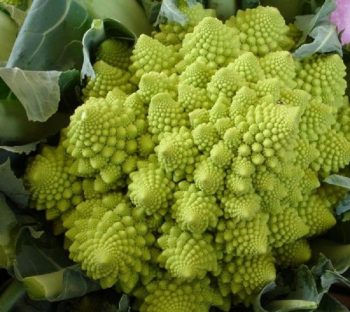

With horseradish
The banks will turn out very beautiful, it is pleasant to open in winter. And it’s delicious! For two kilograms of cabbage, you need about half a kilogram of carrots and bell peppers (preferably multi-colored), a small root of celery and horseradish, hot peppers and sweet peas, bay leaves, dill seeds. Put two tablespoons with a large slide in coarse non-iodized salt.
Cabbage is better to take mid-season or late, the heads of cabbage are tight, absolutely high-quality, without the slightest rot or blackening. Chop the cabbage and grind it with salt. Then add the remaining components as soon as they are ready and mix thoroughly.
Peel and grate the carrots in Korean (with a grater or combine), mix with cabbage. Peel the bell peppers, cut them into thin strips, add to the cabbage. Celery and horseradish roots are best chopped with a blender. Celery rubs normally on a grater, but with horseradish you can completely cry and sneeze for life.
In a large bowl, stir in the vegetable and spice mixture. Cover with a wooden mug or just a plate, put oppression on top. After two to three days at room temperature, fermentation will reach its climax. You need to pierce the cabbage, release gases, remove the foam.
The next day, you can tamp it into jars, pour it with brine (you don't need to boil it, horseradish disinfects everything). It is not necessary to close hermetically, polyethylene covers are enough. Store in a basement or cellar. It can be in the refrigerator.
Late varieties of cabbage for pickling and pickling
- "Turkiz". This cabbage variety ripens after transplanting in four months. The heads of cabbage are very dense, do not crack during the growth period, so many housewives save them for pickling and fermentation in the winter.
- Geneva F1. Keeps well almost until the new harvest. Often this cabbage is salted and fermented at the end of winter or even at the beginning of spring, during spring beriberi.
- "Armager". It is considered the best variety for pickling and pickling. During storage, the taste of this variety of kaput significantly improves. It can be stored for up to six months.
- "Moscow late". This variety is distinguished by very tight heads of cabbage. It is considered one of the best yielding varieties. Heads of cabbage have a weight of 7-12 kilograms. Very suitable for pickling and pickling.
- "Kharkovskaya winter". It is also one of the best pickled varieties. Heads of cabbage can be stored for up to six months. Experts recommend salting "Kharkovskaya Zimnyaya" immediately. The variety has a high yield and excellent taste characteristics. It is resistant to frost and adverse weather conditions. Therefore, they remove it even in late autumn. But this variety is also not afraid of high temperatures.
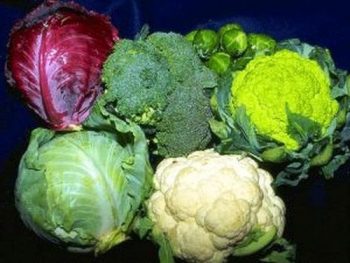

Aggressor F1
Aggressor F1 belongs to varieties that are well suited for long storage in the long winter months. This is a relatively new, recently bred species of white cabbage, which gardeners have already appreciated. Heads of cabbage grow up to five kilograms. The F1 aggressor is quite resistant to pharious wilt and other diseases.
It is quite unpretentious, therefore it does not require particularly fertilized soil and maintenance. The variety is used in cooking in absolutely any form, which in turn raises its nutritional value. Very tasty cabbage soup and borscht come out of it, thanks to its good taste characteristics. In addition, the Aggressor stands out for its excellent yield.
How cabbage is stored in winter
Cabbage varieties are distinguished by the size of the head, by the ripening time, by the nature of use. Early maturing varieties are cultivated for summer use. They ripen early, have a small dense head of cabbage and are not suitable for home canning, pickling, salting. Fresh medium-early and late varieties of cabbage are also used. They have the same tight heads of cabbage, but the leaves are rough. Disease resistant, rot resistant.
Late cabbage is not afraid of frost - it can withstand air temperatures down to -5 ° C. It is removed after the first snow falls. When late-ripening cabbage is sent for storage, it lays down, and at the same time its taste improves, the leaves soften. Usually late cabbage is harvested in late autumn, in dry weather. The heads of cabbage together with the roots are pulled out, shaken off the ground, the upper leaves are cut off, tied in pairs and hung on hooks in the basement or cellar. Alternatively, the cabbage is placed on the ground with its roots or placed on a rack so that the heads of cabbage do not touch each other.
Tip # 2. The ideal temperature for storing cabbage is 0 ° C - + 2 ° C. So you can keep it until May and even until June.
With green tea
An interesting recipe for people who care about their health. For ten kilograms of cabbage, you need half a kilogram of carrots, two heads of garlic, a hundred-gram pack of green tea and ten tablespoons filled with a slide of good salt.
Chop the cabbage (you can also coarsely), grind it with salt until abundant juice appears, rub the carrots through a Korean grater or a vegetable cutter and mix with the cabbage, pouring the tea into it. Mix all this thoroughly and tamp in an enamel bowl so that the juice completely covers the cabbage.
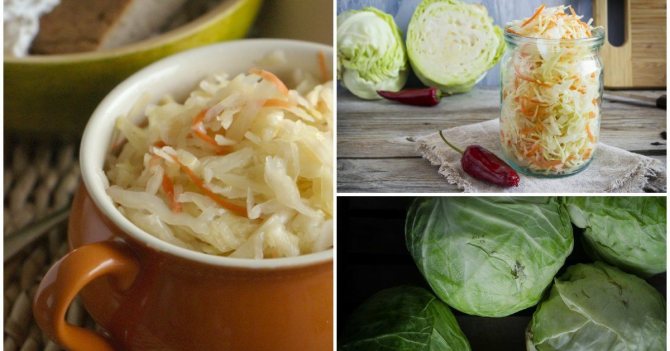

Now cover the cabbage with a plate with a smaller diameter than the saucepan, and put the oppression. Leave at room temperature. After three days, remove the gases by puncturing the cabbage to the bottom in several places.
After a day, you can move it to jars (ram it as tightly as possible) or leave it in the same dish, but send it to the cold - in the basement or cellar. Some people store sauerkraut on balconies and nothing bad happens. She does not lose her wonderful properties, even if it freezes.
Cabbage varieties suitable for storage
For outdoor cultivation, many gardeners often choose cabbage varieties that have long shelf life. Late-ripening varieties are most suitable for this purpose. They have tighter forks, are hardy and high yielding. They have one feature: their taste is not revealed immediately after the harvest, but after they have been lying in the cellar or basement for some time. Here is some of them:
- And here again the universal variety "Gift" is practically in the first place. Under suitable conditions, this variety can be stored for up to 4 months.
- The time-tested sort "Armager-611". Ripening time after disembarkation of seedlings is 120-125 days. Productivity - 4-6 kg / sq. m. Dense heads of cabbage have a bitter taste, but the bitterness goes away during storage. They do not crack. Their average weight is from 2 to 4 kilograms. They can be stored until spring.
- The "Blizzard" variety is fruitful. Cabbage heads of this variety are small, dense, weighing up to 4 kilograms. They have a fine internal structure. They have excellent taste.
- For long-term storage, as well as for pickling and pickling, the variety "Zimovka-1474" is intended. It is hardy and immune to fungal diseases. Bred for cultivation in the northern regions. Its heads of cabbage have a rounded flat shape. Greenish white in color. Weight - 2-3 kilograms. The palatability improves after 3-4 months of storage.
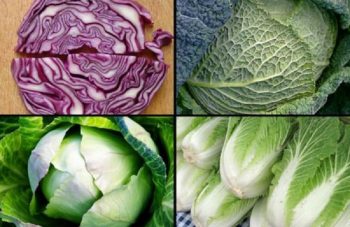

Grandslam F1
Grandslam F1 is a cabbage hybrid that will delight you with a high yield. The heads of cabbage have large, soft leaves that are good for pickling. After processing, this cabbage is sweetish and tastes good.
The hybrid is quite unpretentious, does not crack in the garden.
| Productivity (kg per 1 sq.m) | Head of cabbage weight (kg) | Maturation (days) | Storage |
| 15-20 | 3-5 | 145-160 | Short |
Hybrid cabbage varieties for storage
They are not very popular, although breeders have tried to develop varieties that would impress with the size of the head, high yield and suitability for fermentation. Today they are superior to many varieties in keeping quality. Their weight is usually 2-4 kilograms. The heads of cabbage are dense, but immediately after harvest they are not at all edible. But after 2-3 months they acquire excellent taste.
The late-ripening Kolobok hybrid is ideal for storage. Ripens 5 months. It has a compact, small, rounded head of cabbage with tight-fitting leaves. Doesn't taste bitter. Rich in ascorbic acid. The green upper leaves are juicy white when cut. The mass of a head of cabbage reaches 5 kilograms. In addition to the fact that it is stored for a long time, it can still be salted and fermented.
Modern hybrids "Aros", "Geneva", "Tyuriks", "Crumont" are stored for 7-8 months. They have small heads of cabbage that weigh up to 2 kg. They are not bitter. Good for fresh consumption. Hybrid "Menza" is distinguished by the largest heads of cabbage weighing 5-9 kilograms. They keep well and are good for pickling. Cabbage heads of the "Russian size" hybrid have approximately the same parameters.
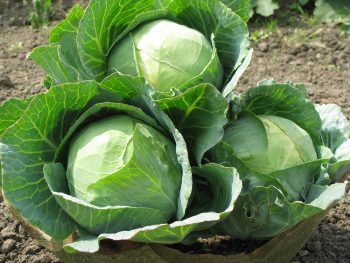

Geneva F1
Another excellent hybrid of cabbage for pickling for the winter is Geneva F1. The shape of his head of cabbage is almost perfectly round - a feast for the eyes!
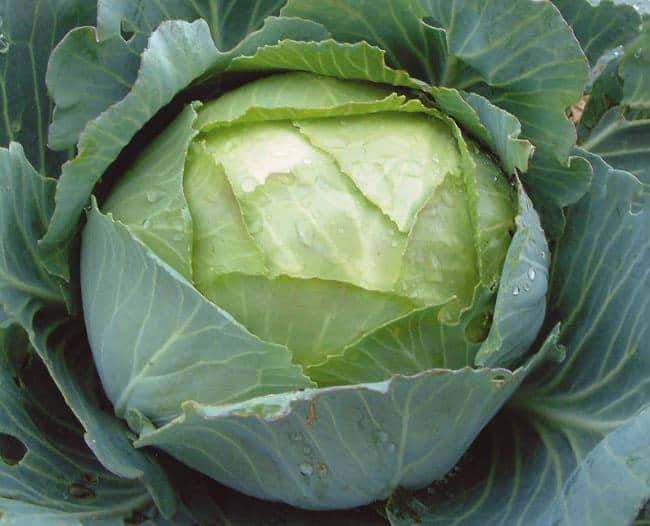

This cabbage is versatile: it can be stored for up to 8-9 months, it is good in salads. Moreover, it does not crack.
| Productivity (kg per 1 sq.m) | Head of cabbage weight (kg) | Maturation (days) | Storage |
| 12-18 | 3-4 | 130-140 | Long lasting |
- How to get a good harvest of cabbage even on a cold rainy summer
5 secrets of growing cabbage outdoors.

